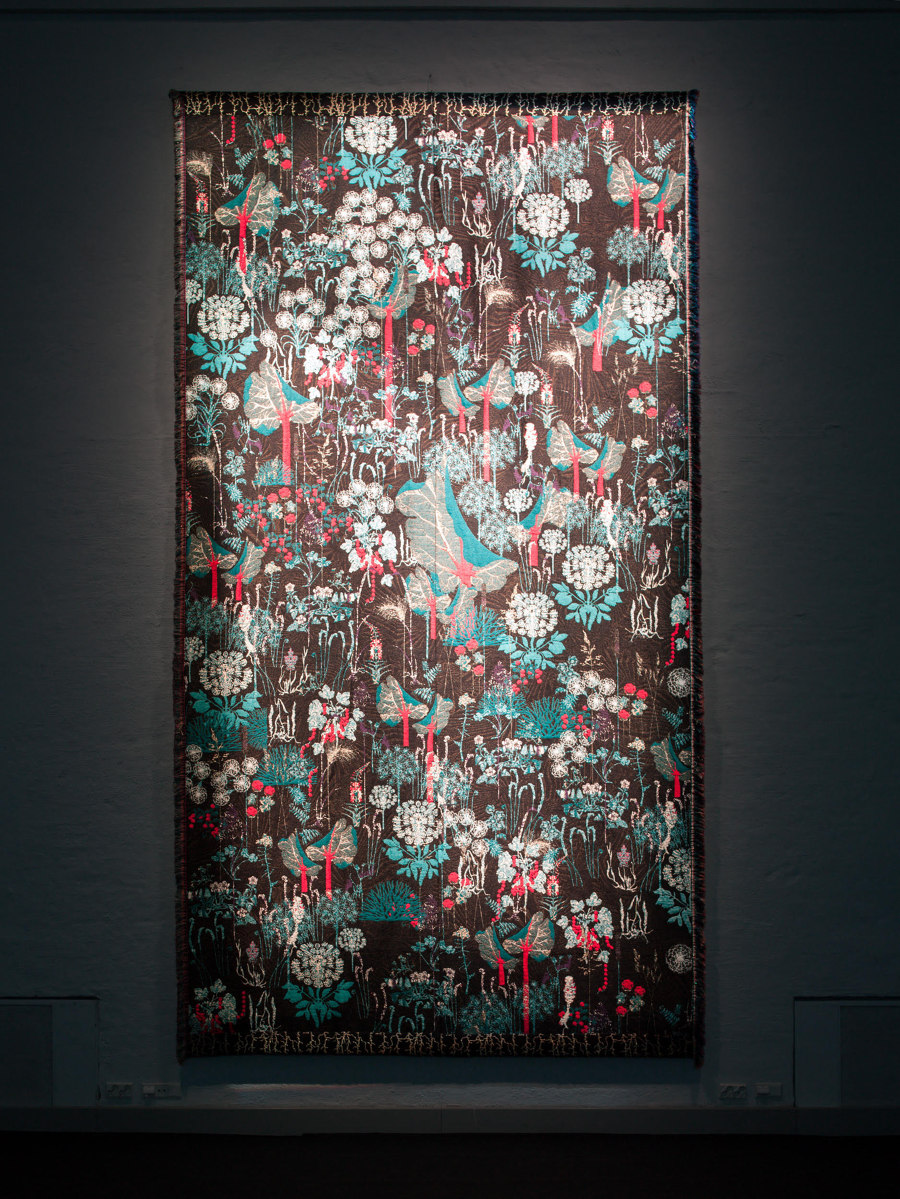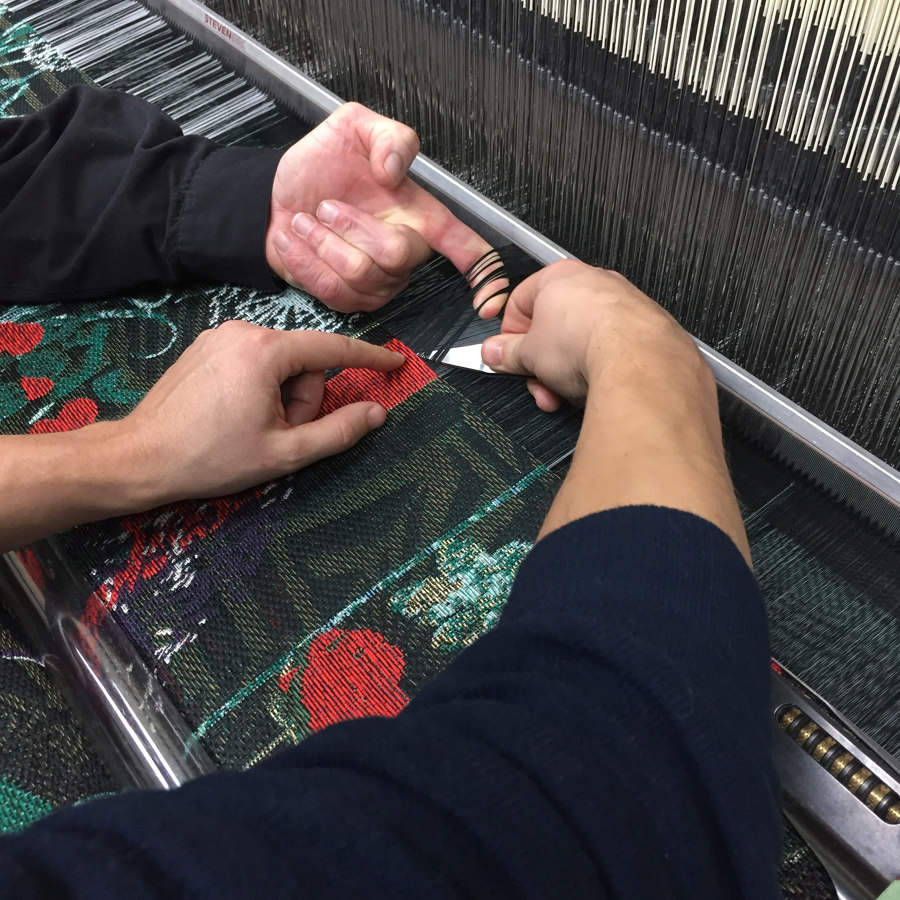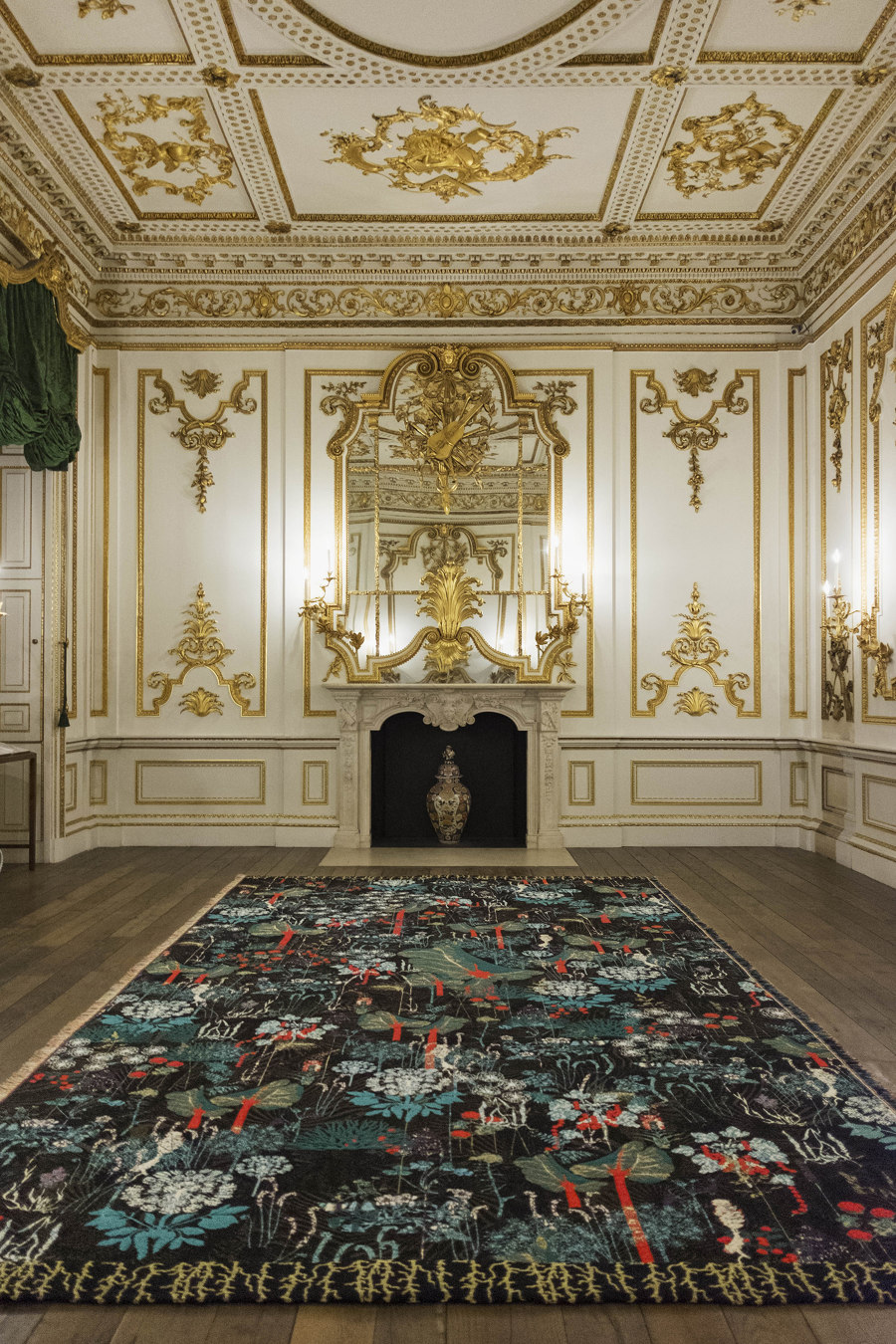Woven Visions of a Distant Future: Kustaa Saksi & IC-98
Text by Lara Chapman
20.06.19
This page has been archived and is no longer updated
In 2017, the Finnish artist duo IC-98, comprising of Visa Suonpää and Patrik Söderlund, teamed up with artist and designer Kustaa Saksi to create a vision of the world in 2,000 years time.
Kustaa Saksi, A World is Waiting, installation view of the tapestry, 2018, RIGA Biennale, Latvia
The result was an intricately woven tapestry of wildflowers that grapples with ideas of a positive apocalypse. The piece is called A World in Waiting. It has been displayed at the Victoria and Albert Museum, in the RIGA Biennale and at the Kunsthalle, Helsinki, with future exhibitions in development.
TLmag spoke with Patrik Söderlund about the many layers and narratives woven into the tapestry and the process of collaboration:
TLmag: Tell us about the thinking behind 'A World in Waiting'.
Patrik Söderlund: We were invited to contribute to the project, Collecting Europe, for the Victoria and Albert Museum and the Goethe-Institute in 2017. The idea of the project was to imagine Europe in 2,000 years time.
We did a research trip to the V&A to see the hunting tapestries. We have always been drawn towards tapestries because of how they portray the world–there is the realism and then, at the same time, a stylized quality. It corresponds with our animations, in which we superimpose fantastical events and realistic elements together. Another important reference were the unicorn tapestries at the Cloisters Museum in New York. I kept thinking about the plants in both the unicorn and hunting tapestries and then the ideas came about quite naturally.
Weaving process of Kustaa Saksi's tapestry, TextielLab, Tilburg, NL
TLmag: How did the site of the V&A influence your work?
PS: In these kinds of projects, we tend to work site specifically, to add something to the context. In this case, we thought that it would be great to continue the tradition of the V&A as an institution and be in dialogue with the collection. So tapestry and its history of applied arts was a good starting point.
TLmag: What other things shaped your concept for the work?
PS: We were thinking from a post-humanistic perspective. Trying to omit all the humans and the animals and just give centre-stage to the millefleurs [thousand flowers] and make it a meadow. There also needed to be an element about the future. I’d been reading about the Svalbard Global Seed Vault and thinking about climate change and the Arctic Ocean so we combined these elements.
There was also the idea that culture and nature are completely intertwined and even if humans disappear, nature will still be shaped by man, by humans, for millennia to come. In a way, the Svalbard Seed Vault is a strong symbol of that. But what happens when those seeds start to have their own lives? Which kind of flora would be dominant from Svalbard in 2,000 years?
Top: Installation, Norfolk House Music Room, 2017, V&A London; Above: A World is Waiting, tapestry, detail

Top: Installation, Norfolk House Music Room, 2017, V&A London; Above: A World is Waiting, tapestry, detail
×TLmag: I have read that you wove the seeds depicted in the tapestry into it, could you tell us about this?
PS: The idea for the seeds was inspired by one of our first trips to the V&A. From the very start, we realised that we should weave seeds into the carpet, not only to make a picture of the world but also give it a materiality. That’s actually why it’s called A World In Waiting. It depicts a world that is waiting and, because we have those seeds there, it is also a world waiting to be born. Waiting to sprout. It is pregnant in a way, the carpet, it’s waiting for its time.
TLmag: Was that difficult to achieve technically?
PS: Yes and no. We worked with the Natural Resources Institute of Finland to source the seeds, some of which we couldn’t get because of the season. This was interesting because we make conceptual work like this, thinking theoretically and philosophically but then we are faced with seasonality. It made us realise that conceptually speaking, the work could be better if we could include more seeds. But at the same time, we simply could not include them, which is a great thing.
Technically speaking, we wanted to weave the seeds into the tapestry and not just attach them on the backside or something like that. We worked with Tilburg's TextielLab, where the engineers designed a kind of double-sided structure for the weave so that there would be natural pockets in it for the seeds.
When the weaving machine started, we looked for spots to insert the pouches of seeds. When we found one, we’d stop the machine and then put the seeds there and, once the machine started again, the weave encapsulated the seed.
TLmag: How did the collaboration with Kustaa Saksi come about?
PS: We had seen Kustaa’s works a few years back, in Madrid, when we both had exhibitions on at different venues. We didn’t know Kustaa but we knew his work and really liked it. We thought that this would be a perfect moment to invite an artist, who is also a designer, to work with us as it would close the project in a perfect circle.
TLmag: How did the collaboration work? Did you have specific roles? What was the process like?
PS: From IC-98’s point-of-view, it was a slightly new situation. It’s always risky when you invite somebody to do a work with you. Although we had never met Kustaa, we clicked immediately and it was a super enjoyable collaboration.
Normally, with IC-98, Visa does the drawings and final visualisations, but this time he wasn’t doing that, so it was a new dynamic. Visa and I concentrated on the conceptual and research side. We were in dialogue with climate scientists and the people responsible for the seed program to define the plants that would be viable in 2,000 years. We came up with the final selection of the plants. And we decided on the medium of the weave. Then, with this background research, we gave that material to Kustaa and he was completely free to interpret that research in the way he felt best and appropriate.
TLmag:How does the tapestry fit in with your previous works?
PS: Before the tapestry, we had been doing quite a lot of dark work. People see our two latest animations, Nekropolis and Epokhe as melancholic and dark, and they are. So we asked ourselves, would it be possible to talk about the same things in positive terms? I don’t mean positive from the human perspective but positive from the point-of-view of other species. So what good could we see in this apocalyptic moment of climate change? That’s actually really important. It’s what made us interested in using plants and flowers in the first place.
TLmag: Is this tension between utopia and dystopia a theme you’d like to keep working with in the future?
PS: Yes. We are collaborating with Kustaa on a smaller scale piece which also includes plants, but in a different way. It will be a companion piece to the big tapestry that will tell the same story from a different perspective. It will add another layer to A World in Waiting, but I’m not saying anything else about that for now...
Interview by Lara Chapman
@ic98socialtoolbox
@kustaasaksi






